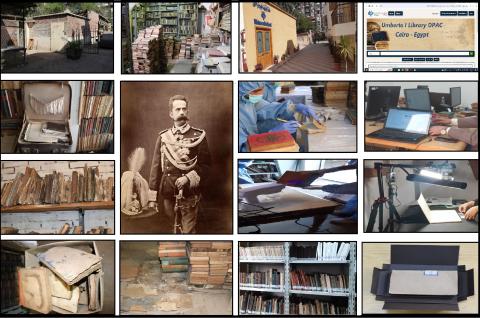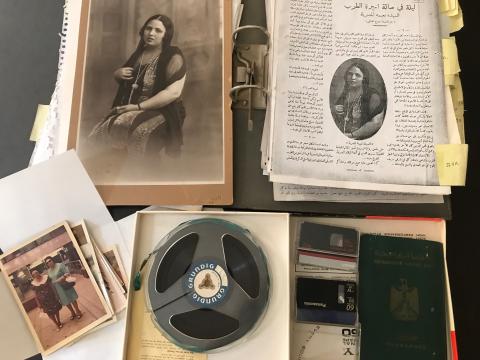Aims and objectives
This project is a result of Cambridge University Library being presented with a unique opportunity of rescuing from a bank vault in Paris a collection of precious medieval Hebrew and Arabic documents from the Cairo Genizah. The aging family who owns it is anxious to make institutional arrangements in the near future and if this does not prove possible will simply sell it off (or give it away) as individual items to collectors without any concern for accessibility.
In the past hundred years, the documents found in the Ben Ezra Synagogue in Cairo, Egypt, have revolutionised the study of most aspects of medieval Jewish culture in the Mediterranean area. Some 200,000 items (comprising almost a million leaves), held in various libraries around the world, have not only made possible the reconstruction of many of the best-known Hebrew, Aramaic and Judeo-Arabic works of the 10-13th centuries but have also brought to light the existence of numerous, previously unknown, literary items. In addition, the Genizah materials have also illuminated the daily lives and culture of Jews, Muslims and Christians in the eastern Mediterranean during a period that included the Crusades and that saw contacts with the western Mediterranean and North Africa on the one hand and with India on the other. These fragmentary pieces, in vellum and paper, include bills, lists, itineraries, letters and cheques that have fascinated social and economic historians. Their linguistic characteristics have furnished specialists with insights into the development of various Semitic and a number of European languages (the latter because of their transcription in Hebrew characters). The Genizah texts are undoubtedly as important as the Dead Sea Scrolls for scholarly and popular understanding of cultural history.
Cambridge University Library now has the rare opportunity of obtaining a collection of 5,000 unconserved fragments that are currently unavailable for consultation and research. Much of it dates from the classical Genizah period (10-13th centuries) but there appears to be a greater preponderance of 16th century items and of less “standard” material with magical and mystical content.
The current plan is that, as soon as the first batch of 1,000 fragments is received, work will commence on its conservation. The cost of this part of the work is not included in this project. Once each item has been conserved, a digital image of it will be prepared, accompanied by the necessary metadata. A special area within a new wing of the Library currently being prepared will be assigned to the Mosseri Collection. An efficient and expeditious treatment of these items, and an arrangement to make them widely available to scholars, will demonstrate just how important this collection and this project are to the world of scholarship. If the pilot project to deal with 1,000 fragments is successfully completed, it is hoped then to proceed with the treatment of the remaining 4,000 items.
Outcomes
1000 separate fully-conserved fragments have been identified against existing records with their correct classmark, recto and verso have been assigned, and full and detailed physical and content descriptions have been produced. These descriptions are kept on a UNIX system as a text-only file to facilitate long-term availability of the information. Formatted catalogue entries will be placed online as the images are mounted on Cambridge University Library’s website.
All 1000 fragments have been digitally photographed, recto and verso, as 600dpi life-size TIFFs. Lower-quality JPEGs have been prepared of most of the files for mounting online.
The 1000 fragments come mainly from the first half of the Collection, Mosseri “boxes” I–VII, with the whole of boxes I and Ia completed (halakhic and documentary material, mostly). Very few fragments come from the end of the Collection VIII–Xa, due to the particular conservation problems that they will pose.
The first of the fragments are already available to readers through the University Library’s Manuscripts Reading Room, with all 1000 to follow as they are bound into hardcover volumes. Initial estimates of the Collection suggested that it consists of 5000 fragments, whereas the actual total is in excess of 7000.
The records copied by this project have been catalogued as:
- EAP025/1 The Jacques Mosseri Genizah Archive
Due to the cyber-attack on the British Library in October 2023, the archives and manuscripts database is currently inaccessible and we are unable to provide links to the catalogue records for this project.




